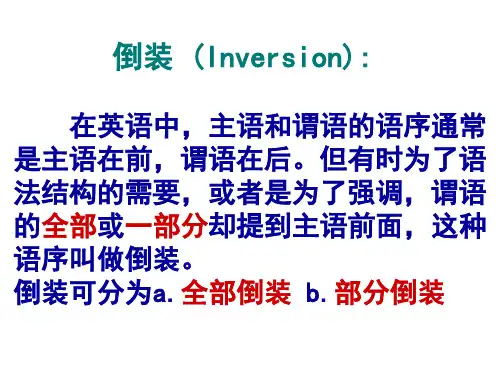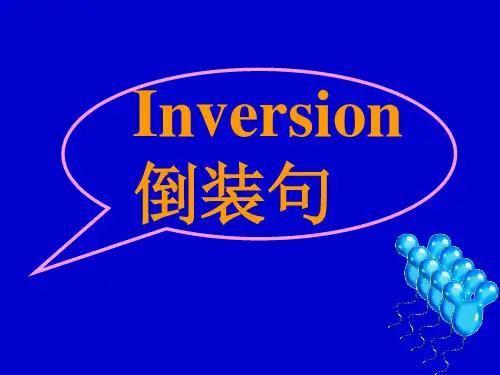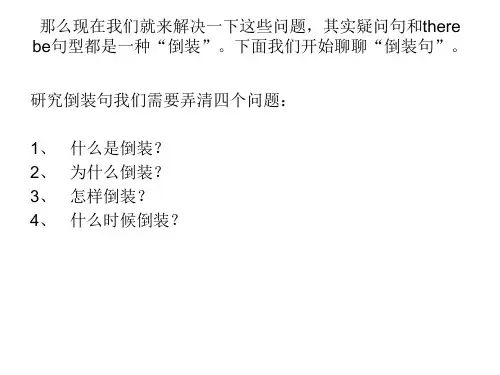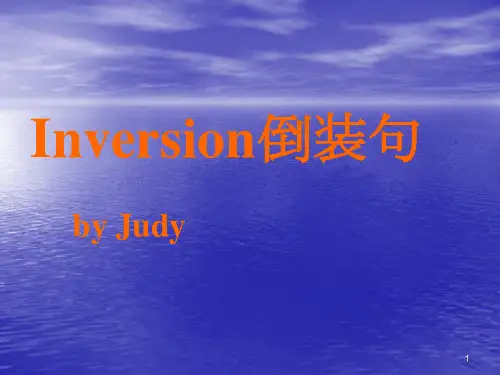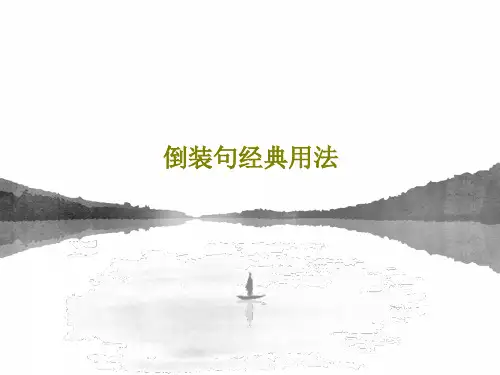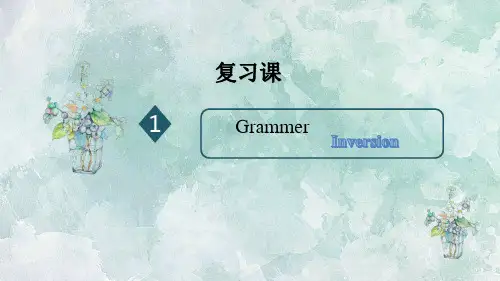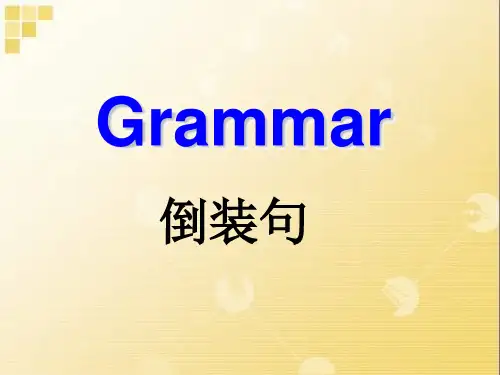动词 do does did • be动词后边不会跟v原型 • be+Ving be +Ved 被动 • 2) 以否定副词开头并加状语的句子要求部分倒装。 • 这些否定副词有barely, hardly, little, seldom, scarcely,never, no sooner…… than, rarely, no more, ,
there are 2 trees. 穿着黑色的人 在远处 正常语序表达怎么说?
there here 地点副词 前面不用介词 go home go to school
例如:There appeared a man in black in the distance.
2) 由地点和时间副词引出的完全倒装句:以地点副词here, there和时间副词now, then 开头,后面的动 词是be, come, exist, fall, follow, go, lie, remain, seem, stand等,而主语又是名词时,构成完全倒装句。 例:Under that tree sits a beautiful girl.
三个引导词后面,然后才是主语和谓语,形成形式上的部分倒装句:
• 例:I know nothing about this river, neither how long, how wide nor how deep it is.(我一点也不了解这 条河,不知道它有多长,多宽或多深。)
Let's have a try!
2 部分倒装
• 部分倒装即只把谓语的一部分(如助动词、情态动词等)放到主语前,或把句子的强调成分提前。 should could(can) might(may) must 能
• 例: Were she to leave right now, she would get there on Sunday. • 1) 以否定词开头的句子要求部分倒装。 • 例:Not until yesterday did little John change his mind.(小约翰直到昨天才改变了主意。) be 助

